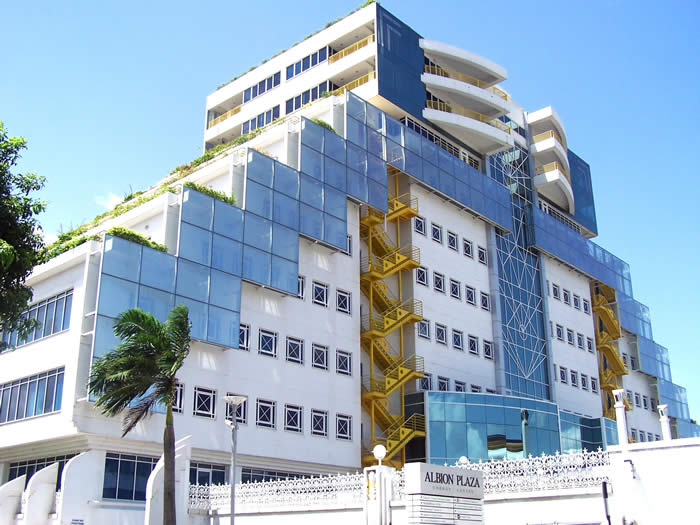Project Name: Albion Plaza
Type of Project: Commercial Building (Structural)
Director in Charge: Anthony Farrell
Design Engineer: Samuel Sooknanan
Design Team: Design Collaborative (Architects)
C.E.P Limited (Structural Engineers)
Enco. (Electrical and Mechanical Engineers)
Watson Construction Management Co. Ltd (Construction Managers)
Year of Commencement: 2001
Cost (TTD): $60 million
Building Description:
Albion Plaza is an extension of Bp Trinidad and Tobago (Bptt), Queen’s Park Plaza, which is situated at Queen’s Park West, Port of Spain. The superstructure is ten stories high from ground level plus three underground parking levels. The building is supported on spread footings. At the lowest basement level, there is a 150mm thick reinforced concrete (r.c) slab on grade. A 225mm thick r.c retaining wall forms the perimeter at the basement levels. Column capitals are utilised to accommodate the r.c flat slabs at ground level and the two levels below ground floor.
The floors above ground consist primarily of 100mm thick precast-prestressed slabs with concrete topping, and r.c insitu slabs. These slabs are supported by r.c insitu columns and beams. There is a multistory bridge which links the Plaza to Bptt from levels 3 to 6. This bridge is approximately 27.5 meters long and 12.5 meters wide, and is comprised of concrete topping on a steel decking. The building has an approximate gross area of 11,640 square meters of parking and 8,100 square meters of office space.
Upon completion in 2003, the superstructure possesses several distinct characteristics.
First, the multistory bridge not only connects the two structural separate buildings, but also serves as a conference center at each level. The various support systems of the steel bridge required special detailing to allow for seismic movement.
Second, glazed solar panes are located at the North and South of the building. The glazing support frames required special detailing of their connections to accommodate for seismic action.
